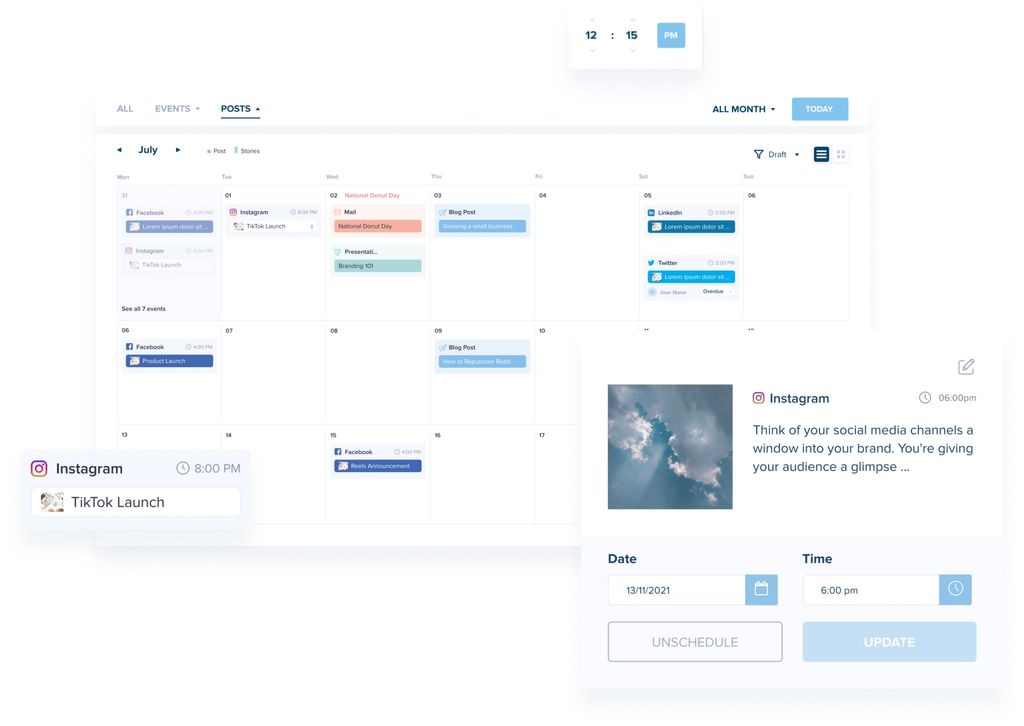
Automating scholar emails can greatly improve productivity and efficiency for researchers and academic institutions. By implementing a productivity system, scholars can save time and effort, increase their productivity, and improve communication efficiency. In this article, we will explore the key features of a productivity system for automating scholar emails, how to set it up, best practices for automation, and case studies showcasing the benefits for scholars.

Automating scholar emails can significantly reduce the time and effort required to manage communication with scholars. With the productivity system, you can streamline the process of sending emails, eliminating the need for manual sending and follow-ups. This allows you to focus your time and energy on other important tasks, such as reviewing applications and conducting research.
Increasing productivity is a key goal for any scholar. With the productivity system, you can streamline your email communication and save valuable time and effort. By automating repetitive tasks such as composing and sending emails, you can focus on more important aspects of your work. The system also allows you to personalize your emails, ensuring that each scholar feels valued and important.
To further enhance productivity, the system provides tracking and analytics features. You can easily track the performance of your emails, including open rates, click-through rates, and response rates. This data allows you to analyze and iterate on your email strategies, optimizing your communication with scholars.
In addition, the system offers automated sending, which ensures that your emails are delivered at the most optimal times. This eliminates the need for manual scheduling and ensures that your messages reach scholars when they are most likely to engage with them.
By implementing the productivity system, scholars can significantly increase their productivity and efficiency in managing their email communication.
Improving communication efficiency is crucial for scholars who receive a high volume of emails. It can be overwhelming to manage a crowded inbox and ensure that important messages are not missed. To streamline the process, scholars can implement strategies such as designating specific times for email management, unsubscribing from unwanted emails, deleting unnecessary emails, and employing labels, folders, categories, and tags. These techniques help scholars stay organized and prioritize their communication effectively.
Email templates are a key feature of the productivity system. They allow you to save time and effort by creating pre-designed email formats that can be easily customized and sent to scholars. With email templates, you can ensure consistency in your communication and streamline the process of composing and sending emails. Whether you need to send out application reminders, interview invitations, or acceptance letters, email templates make it easy to create professional and personalized messages.
Personalization is key when it comes to scholar emails. By customizing your emails to address each scholar individually, you can create a more personalized and engaging experience. Tailor your emails to include the scholar's name, institution, and specific research interests. This will show that you have taken the time to research and understand their work, making them more likely to respond positively. Additionally, consider using dynamic content to further personalize your emails. Dynamic content allows you to insert specific information based on the scholar's profile or previous interactions with your organization. This can include personalized recommendations, relevant resources, or upcoming events. By leveraging personalization options, you can create scholar emails that stand out and make a lasting impression.
Automated sending is a key feature of the productivity system. It allows users to schedule and send emails automatically, saving time and ensuring timely communication. With automated sending, scholars can receive important updates and information without the need for manual intervention. This feature is especially useful for sending reminders, notifications, and deadline alerts.
Tracking and analytics are essential components of any productivity system. By monitoring the performance of your scholar email campaigns, you can gain valuable insights and make data-driven decisions to optimize your outreach efforts.
Key Metrics to Track
To measure the effectiveness of your scholar email automation, consider tracking the following key metrics:
Pro Tip: Regularly analyze these metrics to identify trends and patterns. Use the insights to refine your email content and improve your overall engagement with scholars.
By leveraging tracking and analytics, you can continuously optimize your scholar email automation system and ensure that your outreach efforts are effective and impactful.

When creating email templates, it is important to consider the needs and preferences of your scholars. Personalization is key to making a lasting impression and increasing engagement. Here are some best practices to keep in mind:
Tip: Avoid using overly complex designs or excessive formatting, as it may distract from the main message and make the email less accessible.
Remember, the goal of the email template is to effectively communicate important information while maintaining a professional and personalized tone.
When customizing personalization options, it is important to consider the specific needs and preferences of your scholars. Tailoring the content of your emails to their interests and goals can greatly enhance the effectiveness of your communication. Here are some key points to keep in mind:
Tip: Remember to regularly review and update your personalization options to ensure they remain effective.
Once you have created your email templates and customized the personalization options, the next step is to configure automated sending. This feature allows you to schedule and send your scholar emails automatically, saving you time and effort. You can set specific dates and times for sending, ensuring that your emails reach scholars at the most convenient and effective times. Additionally, you can track the delivery and open rates of your emails, providing valuable insights into the effectiveness of your communication strategy.
Once you have configured the automated sending of emails and integrated tracking and analytics into your productivity system, you will have access to valuable data that can help you optimize your scholar email outreach. Tracking and analytics provide insights into the effectiveness of your emails, allowing you to measure open rates, click-through rates, and response rates. This data can help you identify which emails are performing well and which ones may need improvement. By analyzing this data, you can make data-driven decisions to refine your email templates, personalize your messages, and optimize your sending schedule.

Segmenting your scholar contacts is a crucial step in optimizing your email outreach. By categorizing your contacts based on specific criteria, you can tailor your messages to their unique needs and interests. This personalized approach increases the chances of engagement and improves the overall effectiveness of your communication. Here are some strategies for effective segmentation:
Segmenting your scholar contacts allows you to deliver more relevant and meaningful content, resulting in higher response rates and a better scholar experience.
Crafting compelling email content is crucial for engaging scholars and increasing response rates. When writing emails, it is important to keep the following tips in mind:
Remember, scholars receive numerous emails every day, so it is important to make your email stand out and grab their attention.
Optimizing the sending schedule of your scholar emails is crucial for maximizing engagement and response rates. By strategically timing your emails, you can increase the likelihood of scholars opening and reading your messages. Here are some tips to help you optimize your sending schedule:
Track and analyze the performance of your emails to identify the best times to send them. Use email tracking and analytics tools to gather data on open rates, click-through rates, and response rates. This data will provide insights into when your scholars are most active and receptive to receiving emails.
Consider the time zones of your scholars. If you have scholars located in different regions or countries, adjust your sending schedule to align with their local time. This ensures that your emails arrive at a time when scholars are more likely to be checking their inbox.
Avoid peak times when sending emails. Sending emails during peak hours, such as early morning or late afternoon, may result in your messages getting lost in a crowded inbox. Instead, try sending emails during off-peak hours, such as mid-morning or mid-afternoon, when scholars are more likely to have fewer emails to sort through.
Test and iterate your sending schedule. Experiment with different sending times and days of the week to see which combinations yield the best results. Continuously monitor the performance of your emails and make adjustments as needed to optimize engagement and response rates.
When automating scholar emails, it is crucial to regularly analyze and iterate on your email campaigns to ensure their effectiveness. Analyzing the data and metrics from your email campaigns can provide valuable insights into the performance and engagement of your emails. This data can help you identify areas for improvement and make data-driven decisions to optimize your email strategy.
To effectively analyze and iterate on your scholar emails, consider the following:
Tip: Regularly analyze your email campaigns and iterate on your strategies to continuously improve your scholar email automation.

When it comes to scholar emails, achieving high response rates is crucial for effective communication. Engaging with scholars and getting them to respond to your emails can significantly impact the success of your academic endeavors. To improve response rates, consider implementing the following strategies:
Remember, scholars receive numerous emails daily, so it's important to make your messages stand out and encourage them to respond. By implementing these strategies, you can increase the likelihood of receiving timely and meaningful responses from scholars.
The productivity system offers a streamlined application process for scholars. With the use of automated email templates, scholars can easily submit their applications and required documents. The system ensures that all necessary information is collected and organized efficiently, reducing the chances of missing or incomplete applications.
Additionally, the system provides personalized notifications and reminders to scholars, keeping them informed about important deadlines and updates. This helps to ensure a smooth and timely application process, improving the overall experience for both scholars and administrators.
To further enhance the application process, the productivity system allows for the integration of tracking and analytics. This enables administrators to monitor the progress of applications, identify bottlenecks, and make data-driven decisions to optimize the process.
By streamlining the application process, the productivity system saves time and effort for scholars and administrators alike, allowing for a more efficient and effective scholarship program.
Collaboration is a key aspect of any successful academic endeavor. With the productivity system, scholars can collaborate more effectively with the use of shared email templates and automated sending. This ensures that all communication with scholars is consistent and streamlined, saving time and reducing the chance of miscommunication.
Additionally, the productivity system allows scholars to easily track and analyze their email interactions with collaborators. By integrating tracking and analytics, scholars can gain valuable insights into the effectiveness of their communication strategies and make data-driven decisions to improve collaboration.
To further enhance collaboration, the productivity system also provides personalization options, allowing scholars to tailor their emails to individual recipients. This level of customization fosters stronger relationships and promotes effective collaboration between scholars and their contacts.
By leveraging the features of the productivity system, scholars can experience improved collaboration, leading to more successful academic outcomes.
The productivity system not only streamlines the application process for scholars, but it also enhances their overall experience. Scholars can expect a more personalized and efficient communication with the automated email system. With the ability to customize email templates and personalize messages, scholars receive tailored information that meets their specific needs and interests.
Additionally, the system allows for easy tracking and analytics, providing scholars with valuable insights into their engagement with the program. They can see open rates, click-through rates, and other metrics that help them understand the effectiveness of their communication. This data-driven approach empowers scholars to make informed decisions and optimize their email strategies.
Furthermore, the system ensures timely and consistent communication with scholars. Automated sending eliminates the risk of missed deadlines or delayed responses, ensuring that scholars receive important updates and information in a timely manner. This reliability and efficiency contribute to an enhanced scholar experience, as they can trust that they will always be informed and supported throughout their journey.
In summary, the productivity system not only simplifies the application process but also enhances the overall scholar experience through personalized communication, data-driven insights, and reliable delivery of information.
In conclusion, automating scholar emails can greatly improve productivity and efficiency in the academic world. By implementing a systematic approach and utilizing the right tools, scholars can save valuable time and focus more on their research and studies. This productivity system not only streamlines the email communication process but also ensures timely responses and organized correspondence. With the ability to customize templates, schedule emails, and track responses, scholars can effectively manage their email workload and stay on top of their academic commitments. Embracing automation in scholar emails is the key to maximizing productivity and achieving success in the academic realm.
Yes, the productivity system allows you to create and customize email templates according to your needs.
Absolutely! The productivity system provides personalization options so you can tailor your emails to each individual scholar.
Yes, you can easily configure the productivity system to automatically send emails at specific times or intervals.
Yes, the productivity system offers tracking and analytics features to help you monitor the performance of your sent emails.
Creating email templates is simple. You can use the built-in template editor to design and save your templates.
Certainly! The productivity system supports integration with various tools and platforms to enhance your workflow.